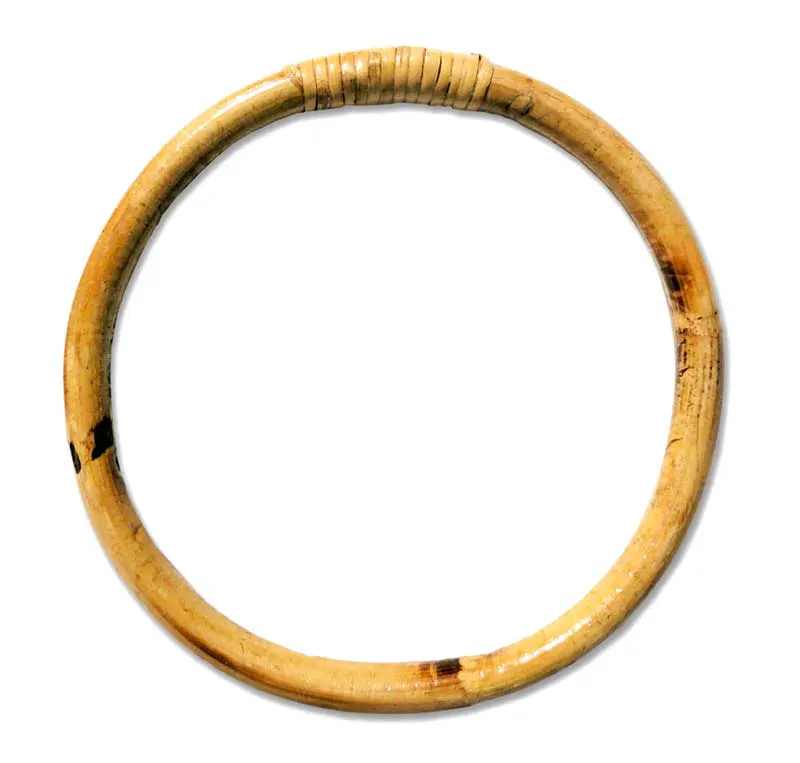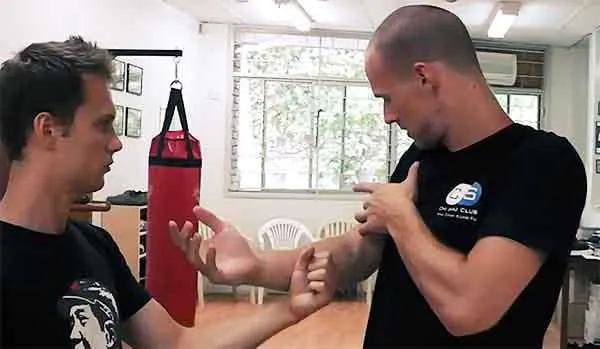The Fundamentals of Wing Chun Kung Fu Training

Yip Man using the Wooden Dummy
The insight that created the theory & concept of Wing Chun supposedly stemmed from Ng Mui’s observations of a fight between a stork and a rodent. She noticed that whilst the rodent attacked the stork in a frenzied flurry of what I’d imagine as “Rodent Windmills”, the upright and balanced stork used circular rotations supported by its mass to redirect the rodent away from its centreline. These circular rotations were leveraged off the stork’s centre of weight and therefore nullified the rodent’s incoming force.
Whether or not this story is true is irrelevant because the insight it sparked is profound and allows one to conceptually understand the nature of Wing Chun’s power.
The Centre of Weight
The centre of weight is the heaviest place in the body because the weight of each individual part cumulates there. In Wing Chun we learn how to mobilise and use the centre of weight as the source of power so that even strong muscular resistance simply can’t withstand it.
Circular Shapes

Rattan Ring
All limb movements in Wing Chun utilize the structural advantage of a circle. The circular shape is stabilized and supported by the center of weight in the body and hence the muscles can remain relaxed in order to move in this different way. The muscles need to be completely relaxed so they don’t interfere with the transfer of weight from the center of mass into the opponent.
Balance
Maintaining balance in fighting is essential and seems obvious. However, in many martial art styles the centre of weight is launched towards the target in the hope of landing a heavy hit. Unfortunately though, during the moments where the body weight is flying through the air it is unstable, and therefore one cannot launch secondary and tertiary strikes at the opponent. It also gives the opponent the opportunity to attack. This is why Wing Chun aims to develop balanced movement of the body weight without compromising its stability.
Centreline

Dropping the shoulder girdle
Wing Chun faces the opponent front on in order to occupy the centreline with any of the four limbs, either independently or in unison. The centreline is the most direct path to the opponent in fighting and allows for a greater degree of control over the opponent’s body. The triangular focus of the stance allows the opponent to be tracked and defended against with relative ease. It also allows the body to integrate its structure and transfer its total weight to the point of focus when striking. The Siu Nim Tao (Little Idea) form trains this very unique ability with continued practice. Even though it can be described, it is hard to grasp this concept without directly experiencing it.
Internal Processes
The elements of internal force are as follows:
-
Tai Gong:
‘Raise the anus’.
Raising the muscles around the anus allows the leg and hip muscles located around the centre of weight to relax. The practitioner will get a sense of the centre of their body weight stabilizing as the muscles relax and the femurs fall back into the hip sockets. The sensation of the front of the thighs flowing upwards and the buttocks and hamstring muscles flowing downwards begins to occur as the sacrum relaxes and drops. If the muscles around the centre of weight are tight, then the centre of weight remains stuck and unusable.
-
Seng:
‘Rise up through the spine’.
When the pelvis and legs are relaxed enough, the joints in the spine can begin to open. This is achieved by “thinking up” from the tip of the coccyx to the top of the back part of the head. Essentially we are aiming to make the back straight so that gravity can transfer itself to the Nim Tao point in the brain and activate it. The aim is to soften and open all joints in the body and we must start with the spine before being able to relax the limbs completely.
-
Nim Lik:
‘Mind force’.
Every movement in Wing Chun is executed with intent, idea or thought. As your spine relaxes and the joints become soft, the energy (Qi) from the centre of weight can travel freely into a part of the brain called Nim Tao. This Qi activates the Nim Tao and produces Nim Lik (mind force), allowing the practitioner to control their subconscious movement with intent rather than muscle. Therefore it is important that all movements in Wing Chun are executed mentally using your Nim Tao instead of using brute muscular force.

These three elements are interwoven and develop gradually. They can be practiced independently with standing practice and also when practicing the Wing Chun forms and Chi Sau (Sticking Hands).
Read AN INTERVIEW WITH GREAT GRANDMASTER IP MAN
The wing chun theory is quite simple and very effective. It may not look flashy but its principles work and can stand up under pressure from much larger opponents, making it ideal for individuals with smaller frames. Nim Tao Wing Chun will help you to develop your skill set and improve your overall health and well-being. Training is very rewarding and fulfilling due to the fact that it helps you to gain control of your mind and body, which for most people helps them to handle life with greater ease and less stress. This art is not about beating others, it is about improving yourself everyday and being able to lead a fulfilling life.